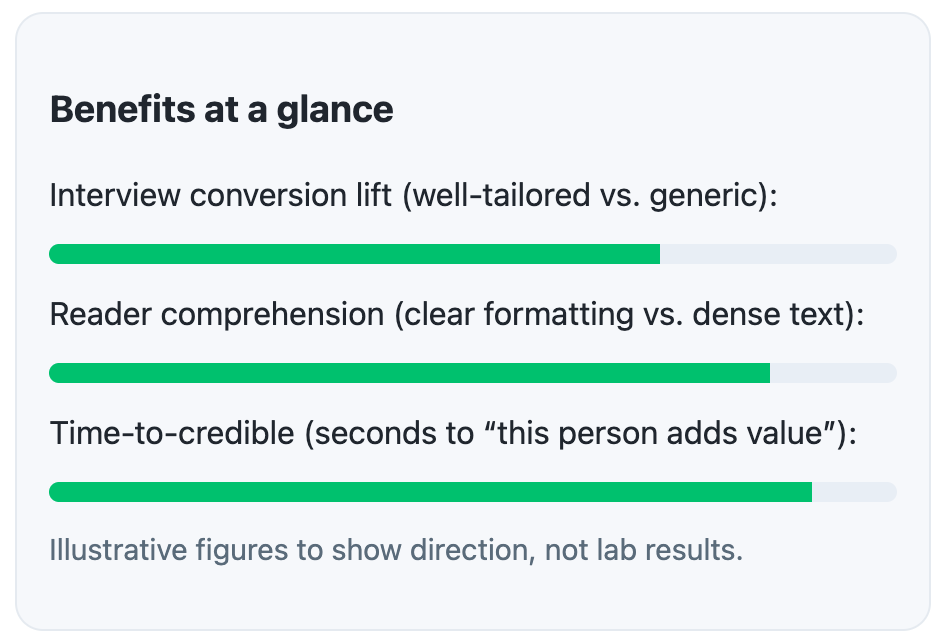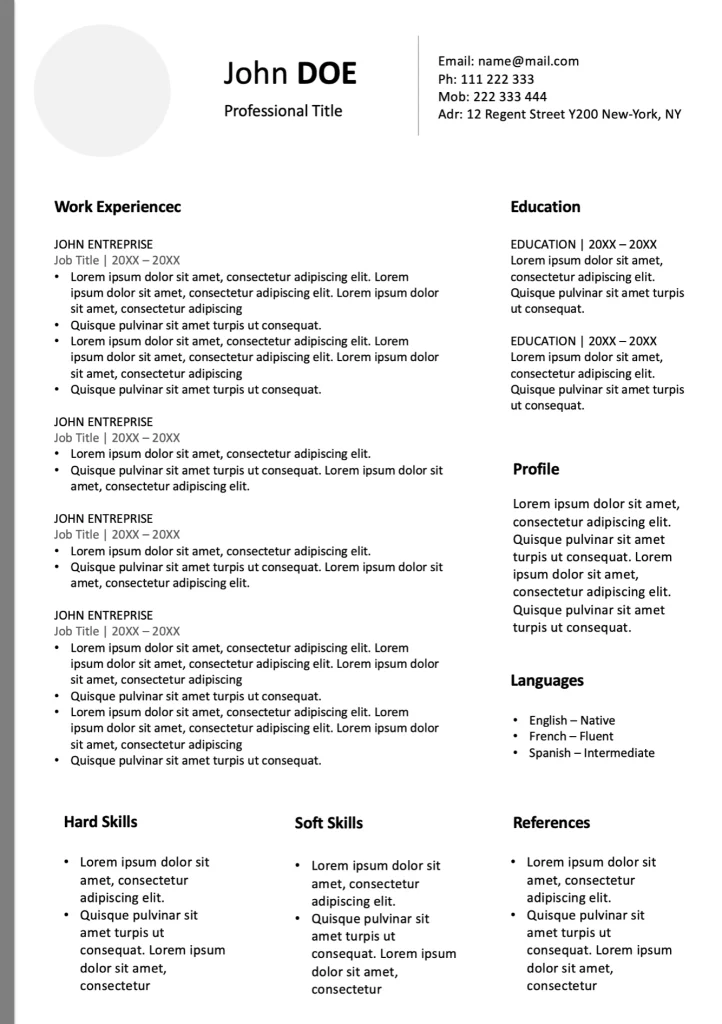In business roles—from operations and growth to product and strategy—your resume isn’t a biography; it’s a business case. In 2025, recruiters skim fast, ATS filters hard, and teams hire for impact. This article gives you a proven structure, interactive checklist, simple calculator, and real-world examples so you can ship a resume that’s crisp, scannable, and value-dense. 🚀
What is a “business resume”? Definition & challenges
A business resume highlights how you create measurable value—revenue, margin, efficiency, retention, risk reduction—using a clean, ATS-safe format. It differs from generic resumes by framing each bullet as an outcome, not a duty, and by aligning keywords to the role you’re targeting.
- 🎯 Outcome-first: “Increased pipeline by 28%” beats “Responsible for pipeline.”
- 🧭 Role-aligned: Headline + skills mirror the job description.
- 🧠 ATS-ready: Simple layout, standard headings, relevant keywords.
- 📊 Quantified: Every bullet earns its space with numbers.
2025 challenge: AI-assisted screening increases keyword sensitivity while shortening human review time. Your first 200 words matter more than ever.
Value Stack
- Revenue & Growth
- Profitability & Unit Economics
- Efficiency & Automation
- Customer Outcomes
- Risk & Compliance
Arrange bullets to reflect the stack your target role values most.
Why a business resume is essential in 2025 ?
Companies increasingly hire on skills and outcomes. A business resume helps you:
- ⚡ Land interviews by mirroring role-critical keywords and impact areas.
- 📈 Prove ROI with quantified metrics per bullet.
- 🤝 Build trust via clarity, recency, and relevant tools.

Step-by-Step Guide: Master your business resume (7 steps)
- Define the target 🎯 — Pick one role family (e.g., Business Operations Manager). Extract 8–12 keywords from the JD.
- Write a sharp headline 📰 — “Business Operations Manager | Process Optimization | Revenue Enablement”.
- Craft a results-led summary 🔎 — 3 lines max, include 2–3 quantified wins.
- Curate a skills block 🧩 — Split into Business (e.g., GTM, Forecasting), Analytics (SQL, Excel), Tools (Salesforce, Looker).
- Write impact bullets 💥 — Action verb + business lever + metric + method: “Reduced churn 2.4 pts by launching QBR program across 60 SMBs.”
- Keep it ATS-friendly 🤖 — No tables for core text, standard headings, common fonts, one-column body.
- Tune length & order ⏱ — 1 page (0–8 yrs), 2 pages (9–20 yrs). Put your most relevant section first.
Common mistakes & how to avoid them
- No numbers — Add scale: revenue, % change, volume, cycle time.
- Keyword mismatch — Borrow phrasing from the JD.
- Over-designed layout — One column, standard headings.
- Jargon without outcome — Explain impact in plain English.
- Irrelevant history — Prioritize what maps to the target role.
- Passive voice — Led, launched, grew, reduced.
- Too long — Trim to the highest-leverage bullets.
- Vague tools — Specify versions/scale where it matters.
- Confidential data — Use safe ranges or relative (%) metrics.
- Typos — Final proofread in PDF.

